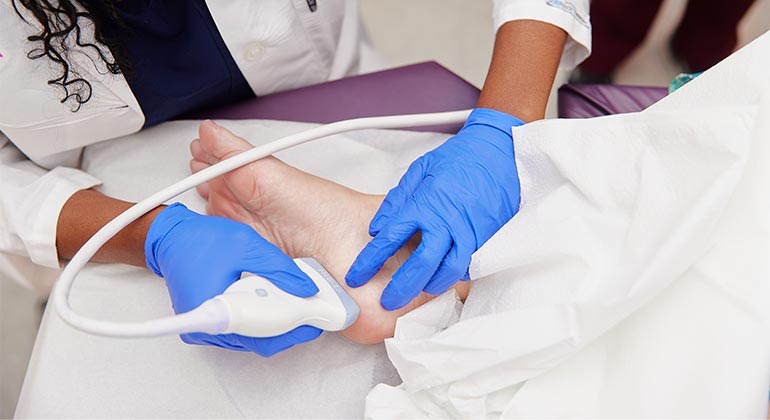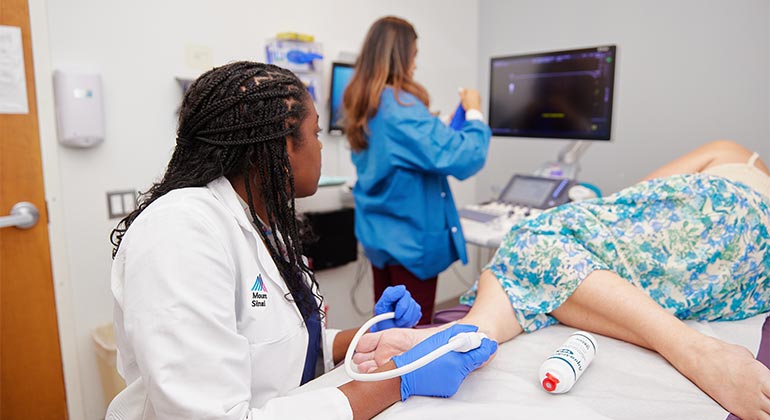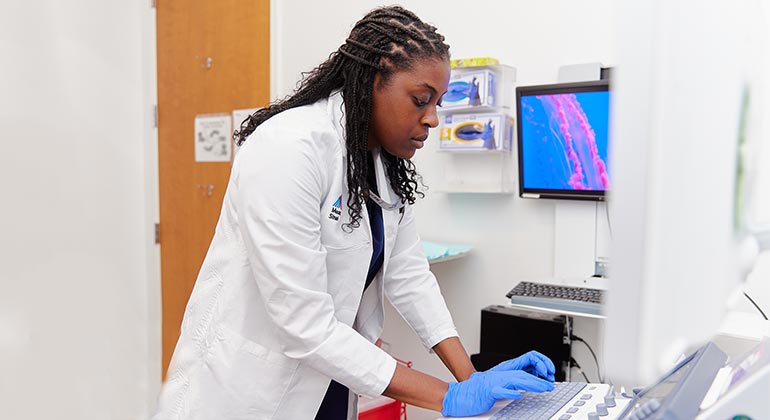Musculoskeletal Ultrasound-Guided Procedures



Ultrasound uses high-frequency sound waves to create images of bones, joints, ligaments, and tendons (the musculoskeletal system). It does not use ionizing radiation (X-rays). At the Mount Sinai West Ambulatory/Brodsky Building, we use this approach for a variety of diagnostics and treatments, including:
- Cyst injections and aspirations
- Joint and bursa injections and aspirations
- Morton’s neuroma injections
- Plantar fascia injections
- Rotator cuff calcific tendonitis lavage and aspiration
- Tendon sheath injections
Ultrasound-Guided Lavage for Calcific Tendinitis
When calcium deposits build up—often in the shoulder or rotator cuff—we call it calcific tendinitis. The condition can be very painful. Ultrasound can break up and remove these calcium deposits. We use a local anesthetic, but you remain awake during the procedure.
Please let us know and reschedule your appointment if you have:
- Fever
- Infection, such as a cold or virus
- Vaccination within less than two weeks of your scheduled appointment
There are three major steps to this procedure:
- We use ultrasound imaging to find the calcium deposits and place the needle in the precise location.
- A solution containing saline and anesthetic medication will be used to break up and remove calcium deposits inside the tendon and "washout" the calcium, a process called lavage.
- Finally, we inject steroid and anesthetic medications inside the bursa (fluid-filled sac between bone and muscle or tendon).
You can go home after the procedure. You may have some pain or discomfort after the numbing medications wear off. You can take Tylenol to relieve the pain, but do not take any NSAIDs (such as ibuprofen) because it will prevent your body from breaking up the calcium deposits. You may feel symptoms for up to a week.
Ultrasound-Guided Steroid Injection
If you have joint pain, bursitis, fasciitis, or tendonitis, an injection of steroid medication can reduce inflammation and decrease pain. The key to treating this pain effectively is to inject the steroid medication precisely at the point of pain. We use ultrasound imaging to guide us, which ensures accurate placement of the needle, then inject both steroid and numbing (anesthetic) medication. You will be awake for the 15- to 45-minute minimally invasive procedure. You can leave after the procedure is complete.
While the anesthetic medications will numb your pain, it will wear off within a few hours after the procedure. At that point, you might feel discomfort or even your initial pain. The steroid medication will work within a week after the procedure.
Concerning Signs Following Your Procedure
Please contact the Radiology Department if you feel any of these symptoms:
- Abdominal pain
- Bleeding
- Chest pain
- Fever (temperature greater than 100.6 oF)
- Hives or itching
- Redness, swelling, pain, or red streaking at the procedure site
- Shortness of breath
- Vomiting
If you cannot reach us at the standard phone number (212-523-8713) or the after-hours number (212-523-3799 or pager #33214), please go to your nearest emergency room.